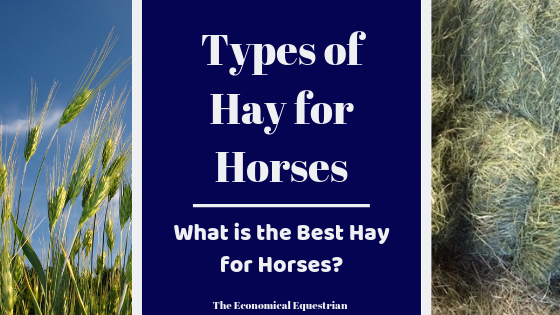
There are many types of hay that you can feed to horses. Different types of hay for horses can vary in nutritional value, taste or texture.
*When in doubt about what hay is best for your horse, consult your vet or an equine nutritionist to determine the best hay for your horse*
The two main types of hay for horses are grass hay and legume hay. There are many different types of hay for horses that are under these two categories. We will explore all the types of hay that are commonly fed to horses.

types of hay for horses – Legume Hay
The legume class of hay includes alfalfa, clover, and birdsfoot trefoil hay. Legume hay is higher in protein and calcium than grass hay is. This higher content of protein and calcium can come with problems.
The increased concentration of protein in legume hay can greatly increase the energy for a horse eating it. If a horse has a heavy workload, or needs more energy and caloric intake, legume hay can be a good fit.
The higher percent of calcium in legume hay can present a problem with the calcium/phosphorus balance. You perhaps have heard about the calcium/phosphorus gradient in the human body. It works the same in horses. If you feed some or all legume hay, be mindful of this relationship and balance your horse by feeding some grass hay or using supplemental phosphorus if necessary.
Feeding a legume/grass mix can be the best of both worlds. The benefits of feeding a legume, like alfalfa, but keeping the balance in your horse’s nutrition and energy levels by also feeding them a grass hay.
What are legumes?
Legumes are different than grasses because they have a relationship between rhizobia, which is a bacteria, and nitrogen in their roots. This bacteria “fixes” the nitrogen from the atmosphere into ammonia, then into ammonium which the plant can then use to make protein. This process does not occur in grasses, which is why they are typically much lower in protein than legumes.
Types of legume hay for horses:
- Alfalfa
- Clovers (Red, White, Sweet., Alsike, Yellow Sweetclover)
- Birdsfoot Trefoil
Alfalfa
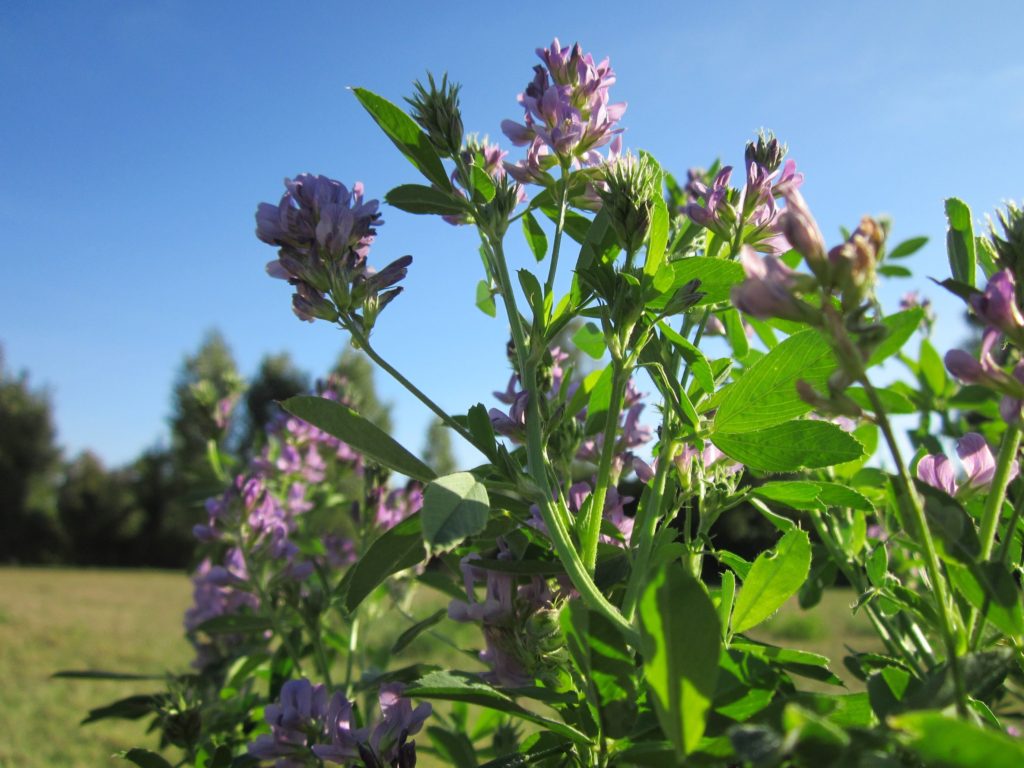
Alfalfa is the most common legume hay for horses. Alfalfa typically has a thicker stem and lots of leaves. This hay is high in fiber, protein and calcium. Alfalfa hay is one of the most common hays available in the US, making it a popular choice for forage for horses.
The increased calcium does mean that phosphorus may need to be supplemented, as noted above.
Clover
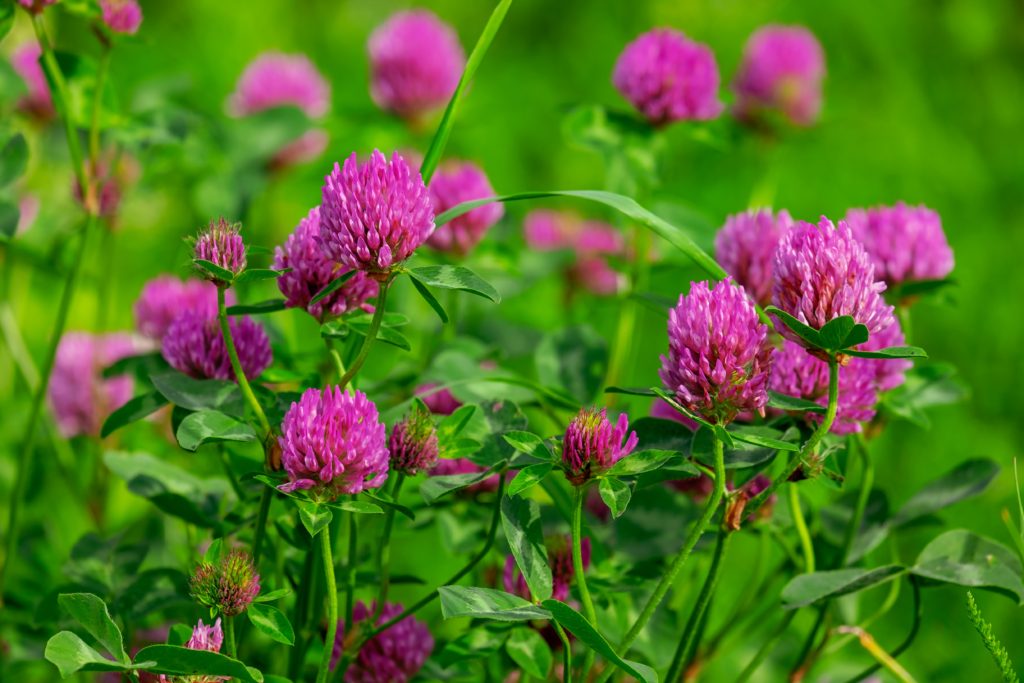
Clover hay can provide energy, protein and fiber, however, if clover molds, it can cause slobbers and bleeding in horses who eat the molded hay. Clover plants usually have three leaves, and the leaves and flower colors vary based on the type of clover. Most commonly, clover is mixed with other grasses
Birdsfoot Trefoil
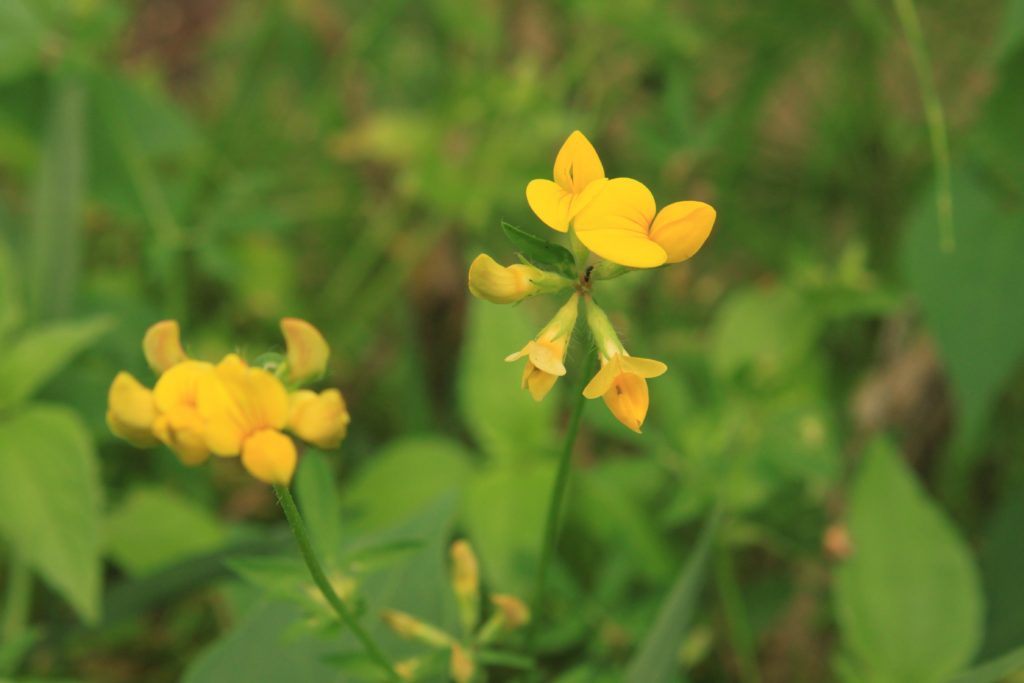
Birdsfoot trefoil is more resistant to negative soil conditions as well as moisture fluctuations. This forage grows to 2-3 feet tall, and is easiest to grow when mixed with grasses. Stems are slender and branch with a multitude of leaves.
The flower blooms are small, bright yellow, and form in clusters at the end of the stems. Once seed pods form they extend away from the stalk and look like a bird’s foot (hence the name).
Legume hay is more easily digested than grass hay, which can be a good or bad thing depending on the horse.
This means that a horse will get more nutrients from less hay but it also means that they get more energy and calories from less hay so it won’t keep a horse occupied for as long.
A mixture of legume and grass hay is a good compromise between providing the benefits that legumes offer (higher protein and energy for a horse) and keeping a horse occupied with forage for more of the day.
type of hay for horses – Grass Hay
Grass hay comes in many varieties and the best hay can vary from horse to horse. There are many different types of grass hay available, although the types of grass available will vary based on your geographic location.
The following is a list of types of grass hay for horses.
- Timothy Grass Hay
- Orchard Grass Hay
- Brome Grass Hay
- Bermuda Grass Hay
- Oat Hay
- Ryegrass Hay
- Fescue Hay
Note that the following descriptions are generalizations. If you really want to know what is in your hay, have it tested! Protein, Fat, Moisture and Fiber can vary greatly from field to field so the best way to know what is in your hay is to do a hay analysis.
Hay analysis can tell you what a hay does and does not have and whether or not you need to be supplementing with something that is missing from your horse’s diet. If horses don’t need additional grain, some people use a ration balancer to make sure a horse is getting all the nutrients they need from their diet.
Timothy Hay
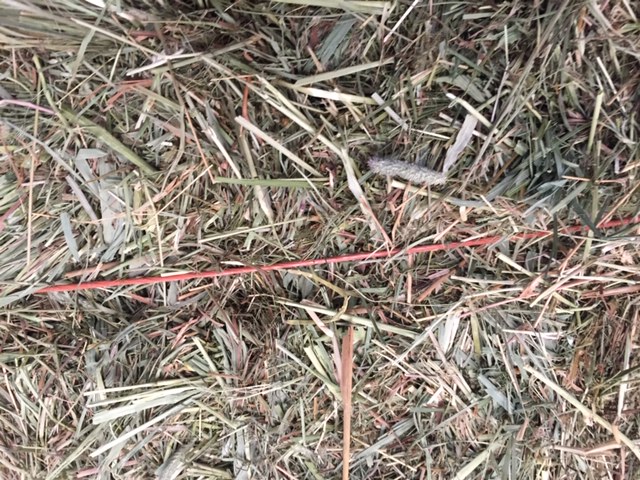
Timothy hay is a common favorite among horses and owners. Typically timothy grass has a finer texture than other grasses. It usually has a higher amount of protein than other grass hays but has a better balance of nutrients such as calcium and fiber.
Orchard Hay
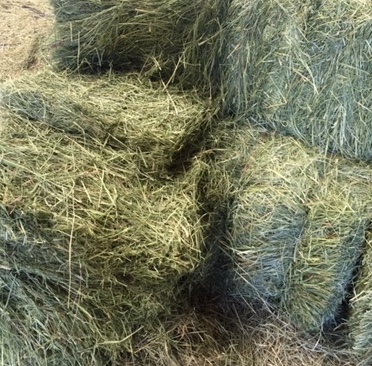
Orchard hay is another common type of grass hay – it usually has a thicker blade than timothy hay but can be softer in texture. Typically, orchard grass is lower in protein than timothy, but it is a favorite amongst horses and owners. This is a tall grass that grows well in cool conditions and varies in color from light green, to dark green, to blueish-green.
Brome Grass
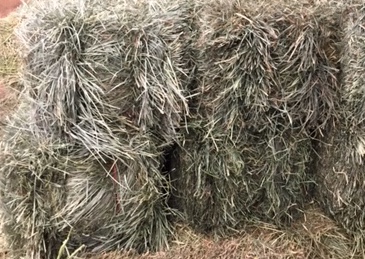
Brome grass is a common hay around Colorado, but in talking with horse friends from the west coast, they’ve never seen brome for sale. So this is definitely a regional hay. Brome is closer in appearance to orchard than timothy, in appearance. Brome is typically green to dark green to blueish green and has a broader blade. This hay is high in protein, but lower in calcium than legume hay. It is highly palatable.
Bermuda Grass
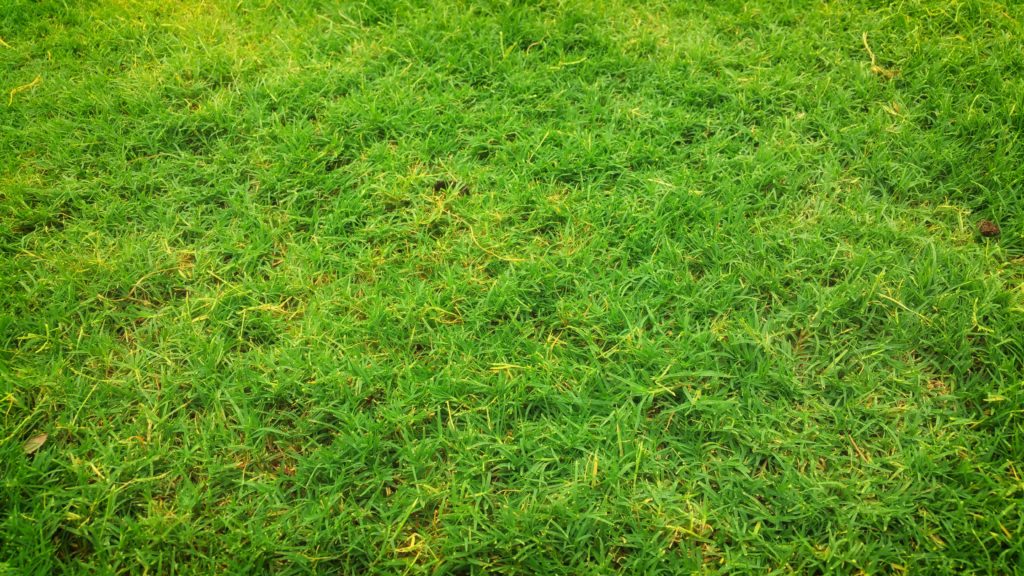
Bermuda grass grows well in a variety of conditions so it is a common hay for horses. This hay is sometimes referred to as coastal hay and is a shorter plant with fine blades of grass. It is lower in protein than some other grasses, so you must ensure a horse is getting enough protein in their diet if this is their only forage. But bermuda grass provides a good source of forage for horses. Bermuda is typically the cheapest grass hay you can purchase for a horse.
There are some loose correlations between bermuda grass hay and colic. It could just be a coincidence between colic symptoms and feeding dry forage though. When in doubt, be sure to discuss feeding this hay with your vet.
Oat Hay
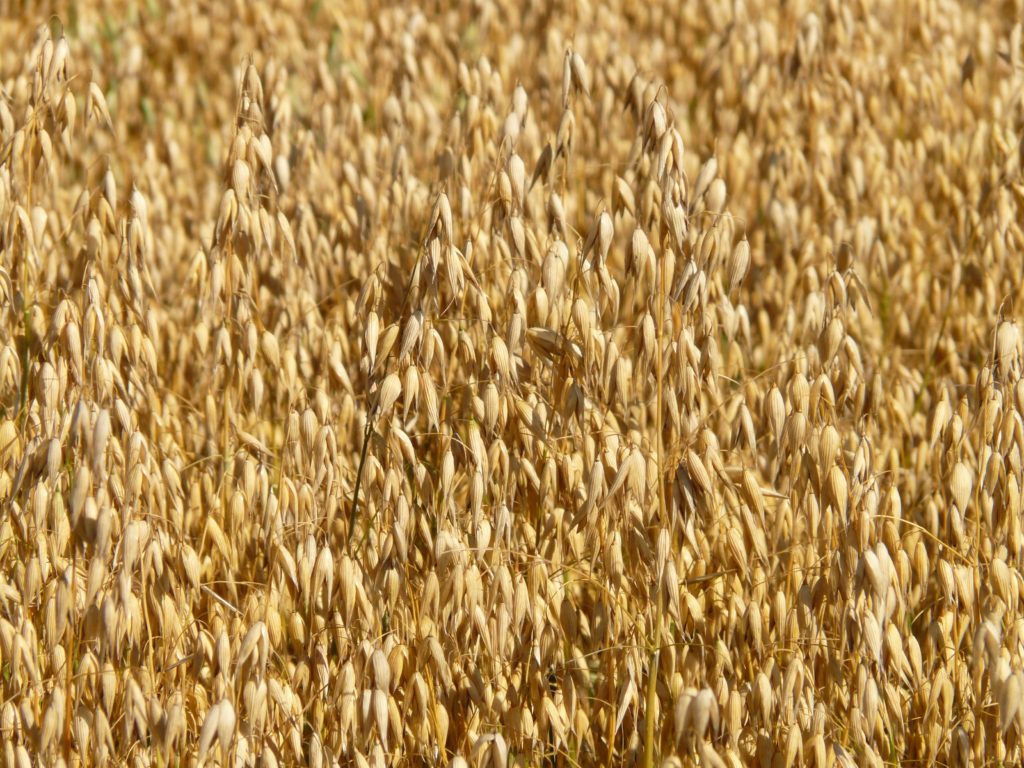
To get hay from oats, oat grass is cut between the milk and soft dough stages of the oat cycle. The resulting oat hay is high in protein and other nutrients, making it a nutritious option for horse hay. Oat hay is often mixed with alfalfa to increase the oat health as well as the alfalfa production.
Oat hay is also quite high in sugar, so it is not a good option for insulin resistant horses. Additionally, the stalks can be thick so some horses won’t eat it because of texture.
Rye Grass
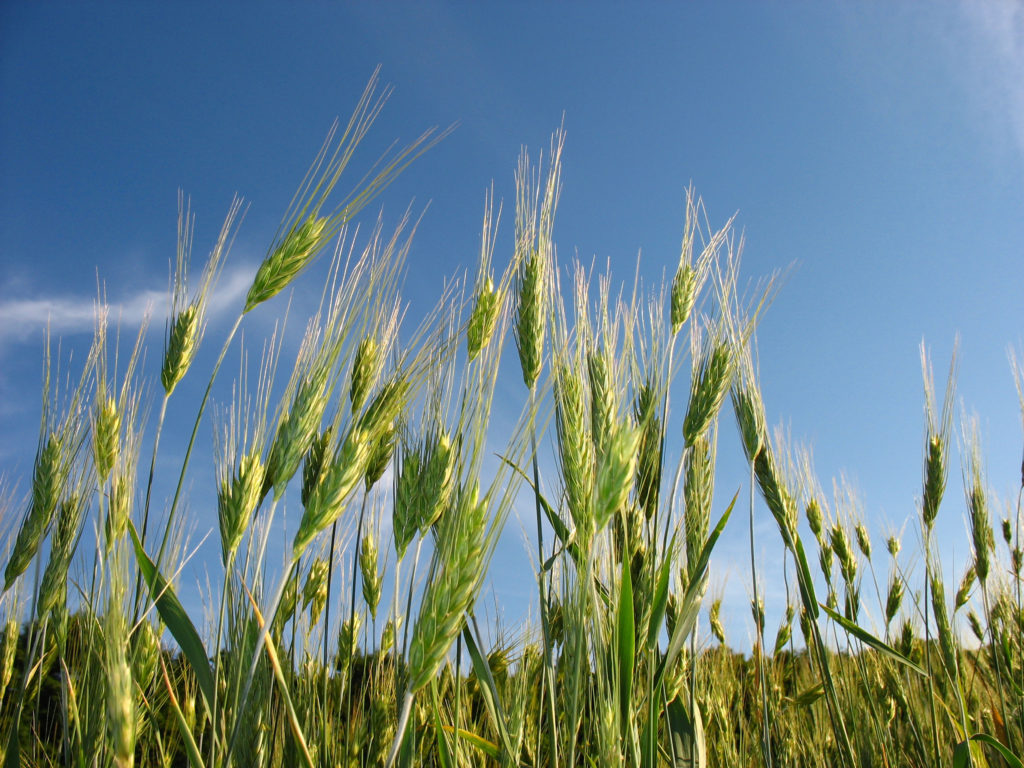
Rye grass is gaining popularity as a forage for horses as it is quick to establish and grow and provides good nutrition. It is quite sensitive to moisture fluxuations though, so care must be taken with overwatering or irrigating it (and it may be difficult to get during a drought).
Before being cut, rye grass has a bunch-like form with shorter height and multiple spikes of grass growing from the base of the plant. It is relatively palatable to horses and has a fine texture.
Fescue Hay
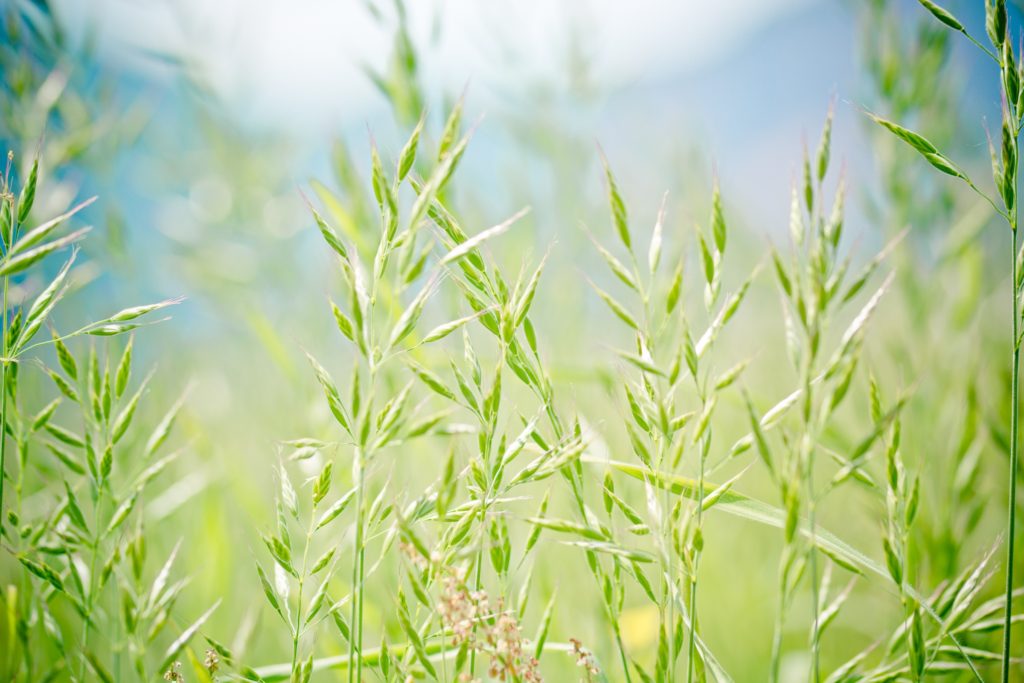
Fescue grass grows relatively tall, with broader blades than timothy hay. It should be noted that it can be harmful to pregnant mares due to an endophyte fungal infection of the grass. Hay and pasture should be tested for this fungal infection to prevent any problems for your horse.
Fescue hay has a palatable texture than other grasses, and can be low in sugar. It does spike in sugar production in the fall, so be cautious when grazing or feeding it to sugar sensitive horses.
What hay is best for horses?
No matter which type of hay you choose, some characteristics should be consistent when looking for high quality hay for horses.
- Hay should be dry to the touch
- Hay should be free of Mold
- Smell like hay (kind of a sweet smell). You don’t want a damp or musty smell
- Bales should be consistent in weight (too heavy indicates mold or too much moisture, while too light can indicate over drying or lack of nutrients for your horse)
- Hay should be green. Color can vary based on grass type and exposure to sunlight. Light brown hay can indicate that the hay sat too long in the sun drying.
- Pick a hay your horse likes to eat. This typically indicates that it has a good flavor
Keep in mind that even though some of these hays may sound better in their description, ultimately the best hay for your horse is the one they will eat. Oftentimes, the hay that a horse enjoys the most is the one they are most accustomed to.
Many of you will wonder, what type of hay is best for horses? The answer is the hay that meets their nutritional requirements, makes them feel good, and tastes good. Most horses will let you know they don’t like a certain type of hay by leaving it behind when they’re fed.
What type of hay do you feed your horses?
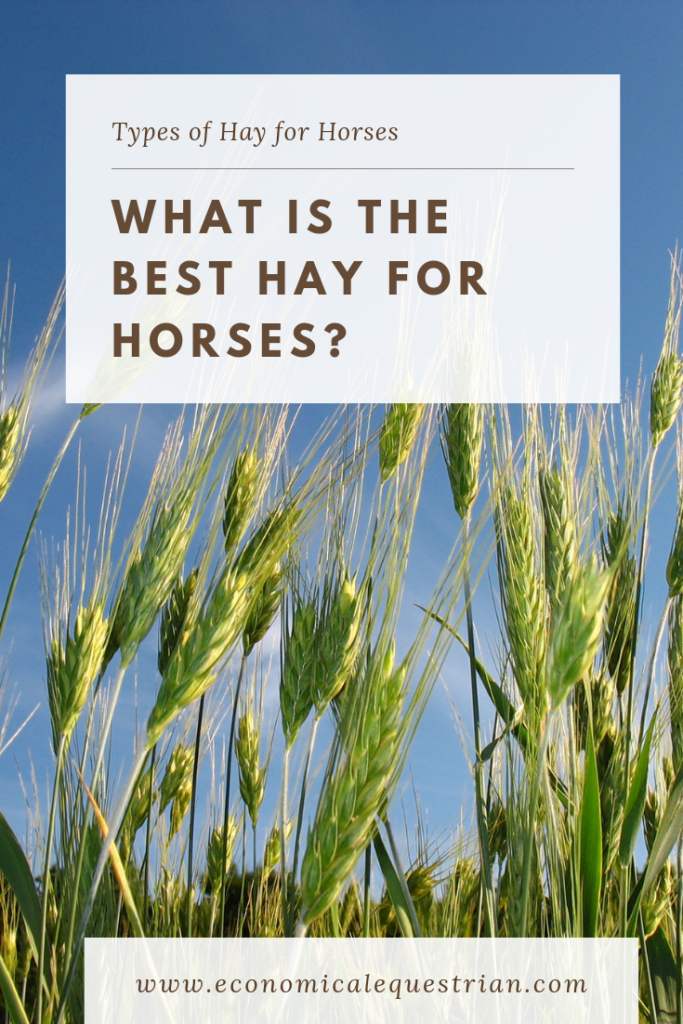
Leave a Reply